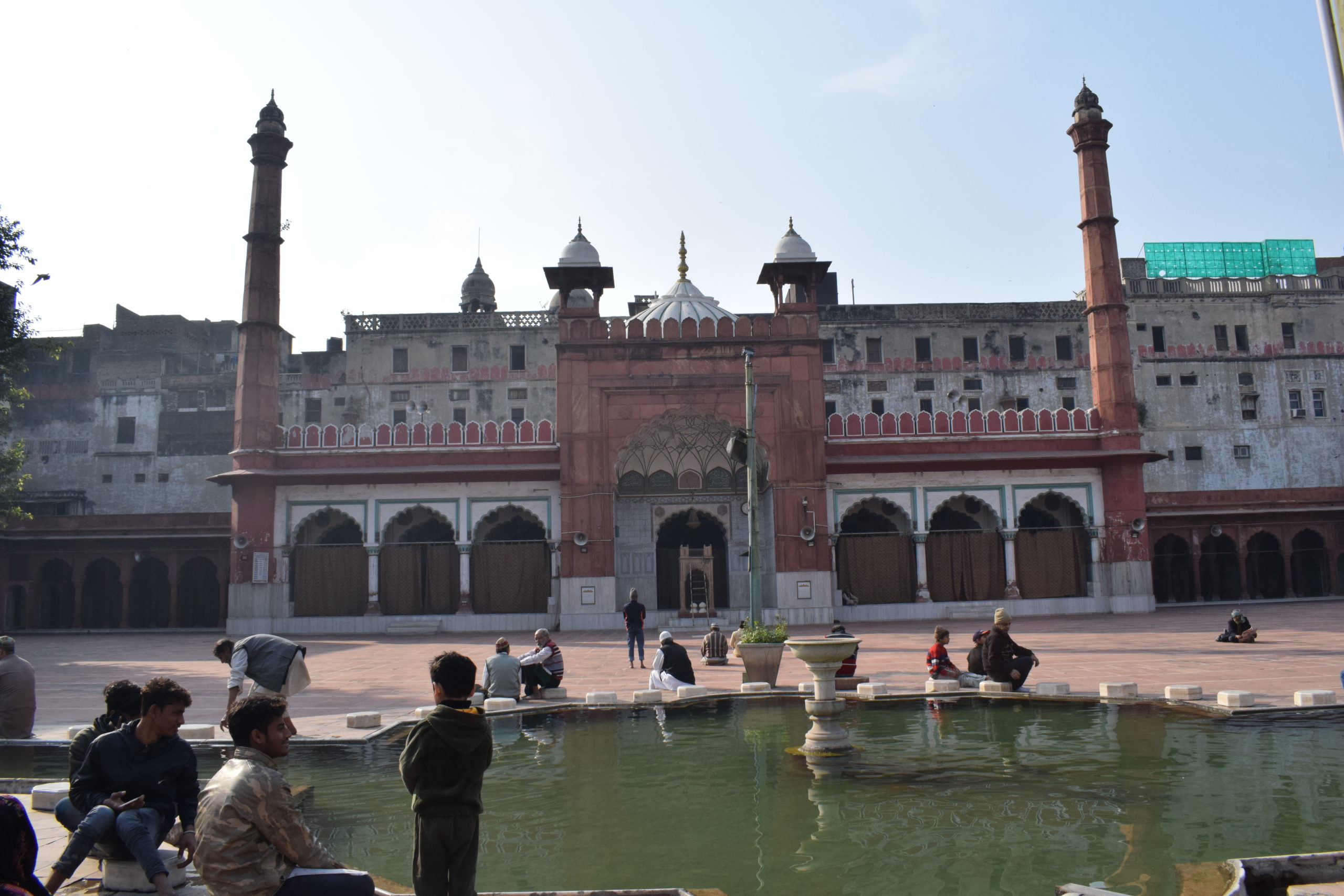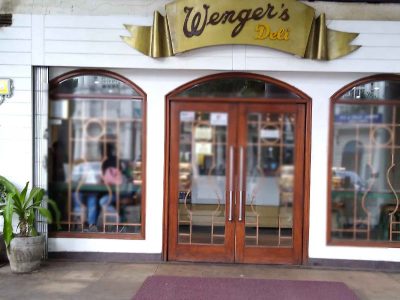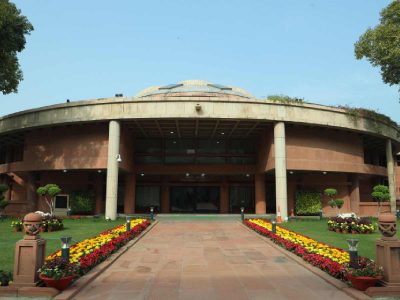A paradise for foodies, shoppers and heritage lovers – walking through the walled city’s redeveloped grand road is like opening a treasure box
The redevelopment of Chandni Chowk is the talk of the town. That is reason enough to visit this chaotic, mesmerizing bazaar in the walled city. But, the crowd, heat and dust are daunting and I wait for winter.
On a sunny Sunday morning, with my camera in my backpack, I take the metro to the bazaar that has rocked hearts since the day it was built by Mughal emperor Shahjahan in the 17th century. This grand bazaar was designed by his daughter Jahanara Begum.
The heritage trail of this redeveloped and beautified 1.3 km stretch begins from Red Fort and ends at Fatehpuri Masjid. I had visited the area once during the revamping phase in 2021, so, I knew that the Delhi government had converted this into a ‘non-motorised’ zone between 9 am to 9 pm.
Besides saving yourself from the sound of honks and bumpers, finding a space to park the car in this part of the city is like trying to find a needle in a haystack. The construction work on a multi-level car parking near the Chandni Chowk metro station is in progress. I prefer to travel by metro, which is also an eco-friendly option saving fuel and preventing pollution.
This long pedestrian-friendly road is now paved with red sandstone and granite. The centre of this stretch is adorned with benches and plants. There are new lamp-posts and navigating is easy as shiny signages mark the streets. CCTVs have been installed and the overhead hanging wires are now underground.
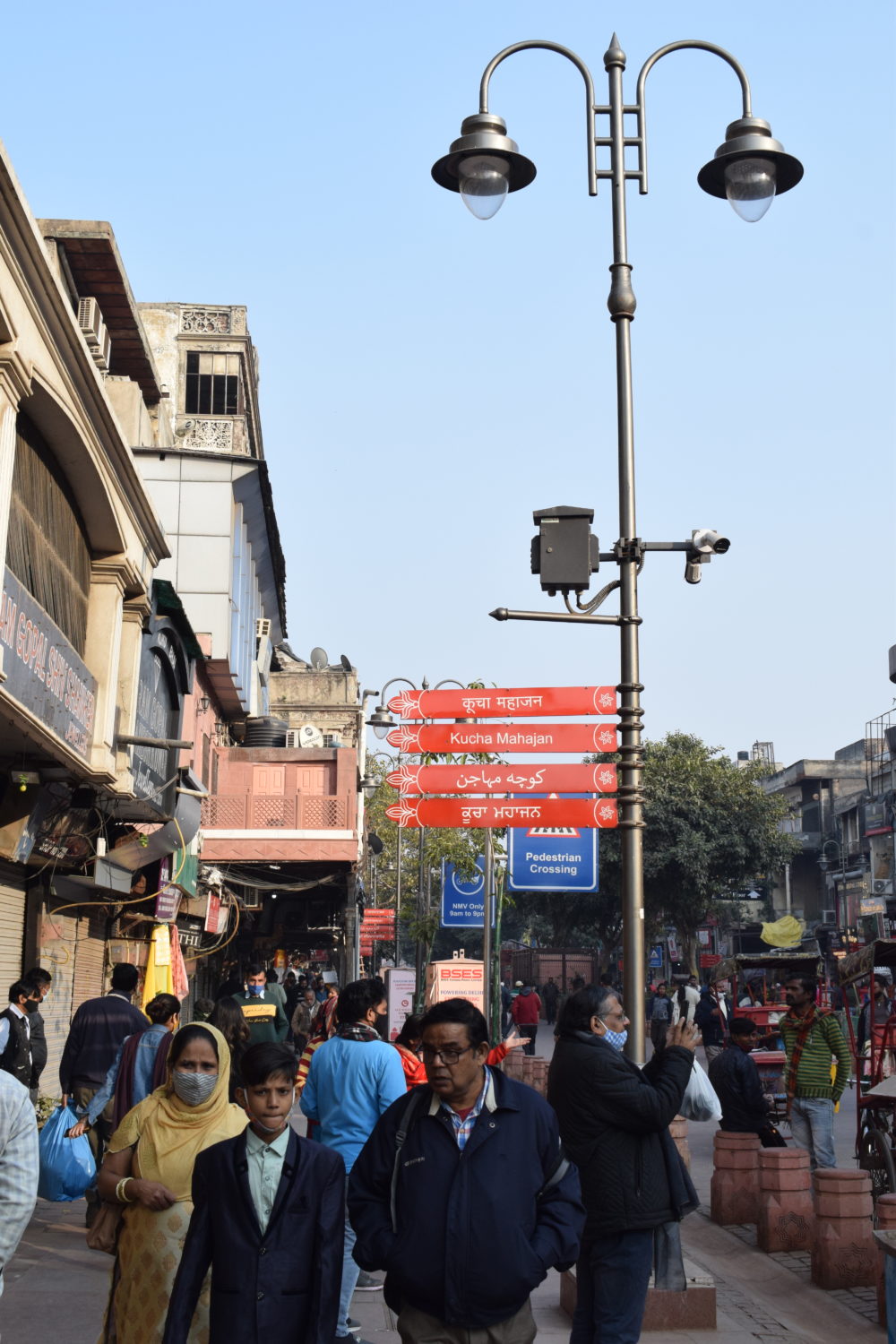
The Original Complex
Way back in the 1650s when the Mughal king and his daughter brought this area to life, shallow canals ran through. Chandni Chowk, or the Moonlight Square, originally had 1,560 shops. According to historical records, it was 40 yards wide by 1,520 yards long. Of course, the maze of alleys and shops is baffling in current times.
The original bazaar complex was square in shape and had an elegant pool in the centre. The water reflected the silvery light of the moon, and thus, the bazaar was named Chandni Chowk. There were shops built in a half-moon shaped pattern around the pool, but they are long gone. The pool in the chowk was replaced by a clock tower – or as the locals call it, ghantaghar – in the 1950s. That centre is still referred to as ghantaghar, though the Town Hall is the predominant building here.
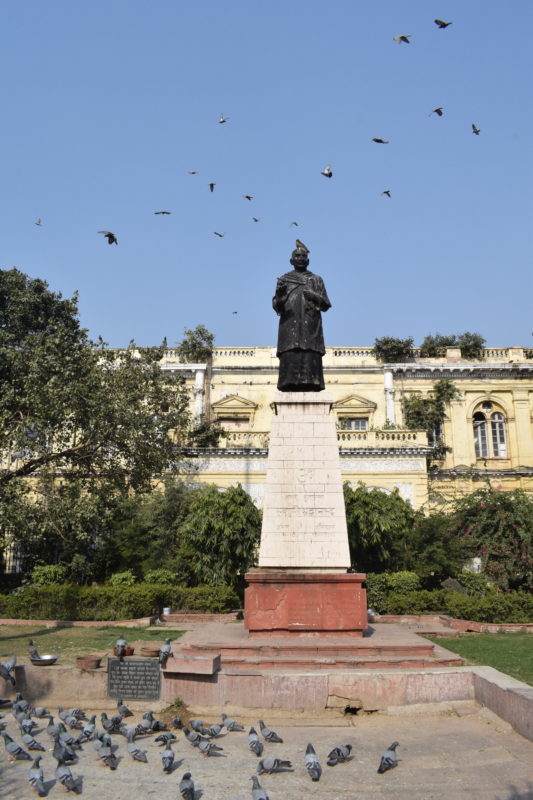
This part was a VIP guest house in the Mughal emperor’s time. And then under British rule, this building was built in 1863. Now, the vacant and dilapidated structure might become a heritage hotel or centre of attraction, as the government plans its future.
Chandni Chowk had primarily three bazaars under Shahjahan’s reign: Urdu, Johri and Fatehpuri. The bazaar was grand then, and even without any royal paraphernalia in current times, it is among the largest wholesale markets in India. However, it no longer boasts the grandeur of imperial processions that took place during the Mughal reign. The tradition continued till the Delhi Darbar was held in 1903.
Not just satiating the desires of shoppers and foodies, the rich heritage zone has been an inspiration for creators too. The land stirred the soul of famous poet Mirza Ghalib, and his haveli in Gali Ballimaran is now a museum.
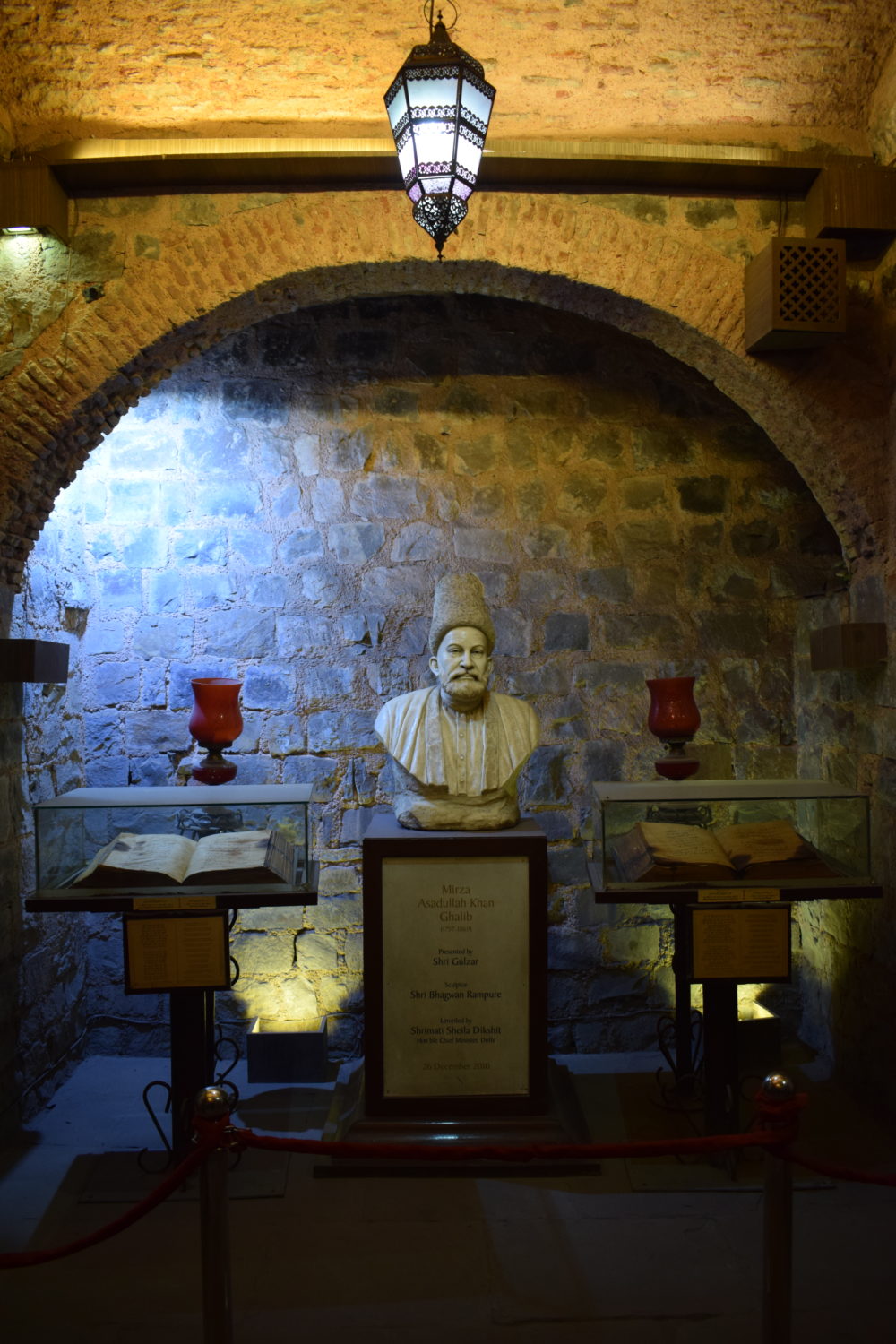
Coming to modern days, I had gone on a walk in the area with author Madhulika Liddle, whose novel Crimson City is based in Shahjahanbad. Her protagonist, Muzaffar Jang, is a detective who lives in the grand old complex and solves many a crime. Maybe, a fountain in the centre of the revamped road would have brought some of the old grandeur alive.
The Heritage Trail
Coming back to my observation on the redevelopment, the road does look broader, but the aesthetics could have been better. Heritage lovers admire the beauty of Mughal architecture and nothing of the glory of yesteryears reflect in the new infrastructure. Also, the Delhi High Court has raised concerns about the hawkers on the pavements. Regular cleaning of this historical stretch of road would help too. I can see stains of paan and garbage on the sides.
I begin my walk near the Red Fort metro station gate as I want to explore the 1.3km road like a tourist. I am trying hard to forget that I am a native, who lived the first three years of her life in the walled city.
The weekend hasn’t slowed the pace of Delhi 6. I look at the magnificent Digambar Jain Lal Mandir on one side. Surprisingly, I have never been inside. The temple, built in 1656, is dedicated to the 23rd Tirthankara Parashvanath and is said to be the oldest Jain temple in Delhi.
History accounts that the Jain monk Acharya Shantisagar visited the temple in 1931. He was the first-ever Digambar Jain priest to visit Delhi after eight centuries. A memorial was built within the premise to mark this event. There is also a famous Bird Hospital within the premises, established in 1929. Over 15,000 birds are treated here annually. I needed more time here, but the sun would disappear, so I chose not to go inside.
On the other side of the road is an 800-year-old Gauri Shankar temple, dedicated to Lord Shiva and Adishakti. Built by a Maratha general Appa Gangadhar, this is believed to be the oldest Shiva-Parvati temple in Delhi-NCR. The shiva linga is made of brownstone phallus which is wrapped within a marble structure. An elaborate procession is held in Chandni Chowk on Mahashivratri every year, I discover later.
On the same side is Bhagirath Palace which was built in 1806. A market for electrical appliances and lights, it was Begum Samru’s palace. I stop for a cup of tea and then stand in front of Sis Ganj Gurudwara.
In awe, I gaze at the memorial of the ninth Sikh Guru, Guru Tegh Bahadur, and his followers Bhai Mati Das, Bhai Dyal Das and Bhai Sati Das. They were executed by the Mughals here in 1675. The gurudwara was built in 1783, when the Khalsa, under the command of Baghel Singh, captured Delhi after defeating the Mughals. The current building was built in 1930.
I cross the famous Jalebi wala, and the aroma of huge jalebi with rabri is irresistible. But, I trudge on. On the other side is Natraj Dahi Bhalla, established in 1940. Chandni Chowk and calories are not friends, I moan. I have to choose between so many favourites – biryani, chaat, fruit chaat, parathas, lassi, kachoris and more.
All of my young life, I had heard the words kucha and katra, but never bothered to understand the terms. Now, the new signages compelled me to Google them up. In Persian, kucha means gali or street. It is a street or a zone with houses whose owners share a common attribute or occupation. Kuchas either had rows of large havelis or cul de sac (dead end) and ‘katra’ aka marketplaces along with them. These katras were gated and the gates were closed at night.
Past shops selling beautiful wedding attire and accessories, I watch the pigeons enjoying the day in the town hall garden. I relish a plate of chole bhature here but skip my favourite masala lemon soda.
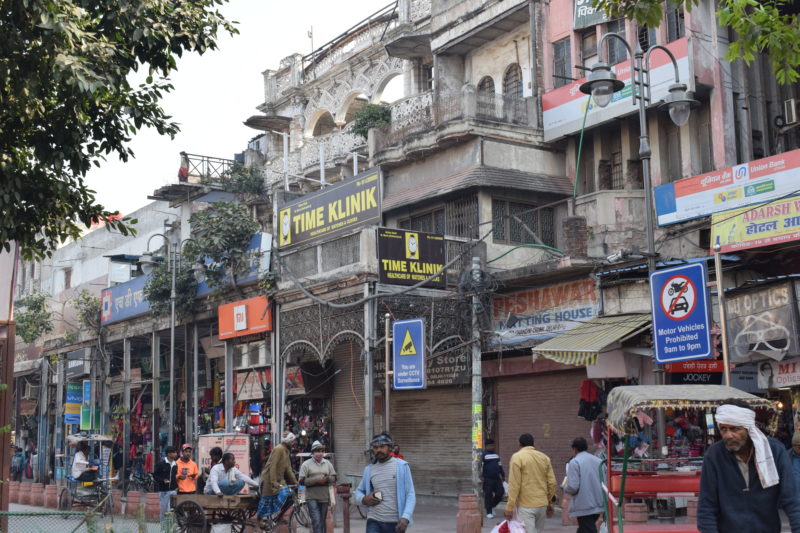
More old buildings, intricate latticework, crumbling structures make me wonder why these façades weren’t given a heritage facelift. And then I am in front of Fatehpuri Masjid. This mosque was built by Fatehpuri Begum, one of Shahjahan’s queens, in 1650. This, too, needs repairs and is frequented by devotees and tourists alike. Families are enjoying the soft sunshine and some are praying. I sit down to savour the delight of this trip down memory lane.
Forgetting my calorie count, I indulge in a plate of Daulat ki chaat outside the mosque and begin the walk back to the metro station. On the way, I take my last picture of the day – Central Baptist Church, established in 1841 by the Baptist Missionary Society.
My walk ended but I have yet to enter the maze of katras and kuchas to find more stories.
More to explore:
● Khajanchi haveli at the end of the road that connects Dariba Kalan and Esplanade Road.
● 18th century Jain Naughara Mansions in Naughara Gali, off Kinari Bazaar. The street has a white marble Jain Svetambara Temple.
● The famous Jama Masjid that was built in 1650.
● Sunehri Masjid was built in 1721 by Roshan-Ud-Daula Zafar Khan in the reign of Mohammad Shah.
For more stories that cover the ongoings of Delhi NCR, follow us on:
Instagram: https://www.instagram.com/thepatriot_in/
Twitter: https://twitter.com/Patriot_Delhi
Facebook: https://www.facebook.com/Thepatriotnewsindia

